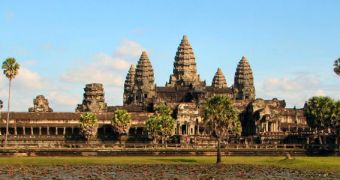The former capital of the Khmer Empire, the city of Angkor, may have been left to fall into disarray after its inhabitants tried unsuccessfully to battle a massive drought that plagued the lands. The kingdom, which flourished in Cambodia between the 9th to 15th centuries, has long since disappeared.
The massive urban complex spanned over 385 square miles (1,000 square kilometers), and was one of the largest in the entire world at the time. It was larger than modern-day Philadelphia, but about 150 square miles smaller than Phoenix (suburbs not included).
Studies conducted on tree rings from Vietnam indicate that the city may have fallen into ruin during a prolonged drought, which the empire tried to battle unsuccessfully. The data even indicate that the droughts alternated with periods of large floods.
After analyzing channels, moats, embankments and reservoirs found at Angkor, the team determined that sediment levels decreased significantly around the 15th century, suggesting the inhabitants of the city had to deal with a type of drought they'd never experienced before, LiveScience reports.

 14 DAY TRIAL //
14 DAY TRIAL //